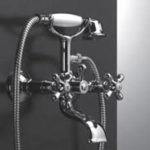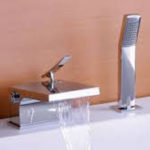Do you have more questions about the bookkeeping process for small businesses? Wondering how best to collect and track financial information, deal with expense management, and ensure healthy cash flow for your business? Here are some of the most frequently asked questions on bookkeeping for small businesses. This means recording transactions and saving bills, invoices and receipts so you have all the data you need to run reports.
The double entry method leaves less room for error, making it the better choice for balancing complex books. With the help of cloud accounting software for small-business bookkeeping, you can pretty much automate the process. Online bookkeeping uses software that takes care of most of the calculations and data entry for you.
with an outsourced bookkeeper?
Before you take on any small-business bookkeeping tasks, you must decide whether a single- or double-entry accounting system is a better fit. The entry system you choose impacts how you manage your finances and how your bookkeeping processes will work. As a small-business owner, individual transactions matter — but so do your overall financial trends.
- Remember that if you have employees you’ll also need to account for payroll tax.
- The major reports to include are the profit and loss, the balance sheet, and a cash flow analysis.
- On the other hand, accountants are generally equipped with an accounting degree and may even be state-certified CPAs.
- Pay attention to when your receivables are due and contact late-paying customers right away to nudge them along.
- If someone on your staff or an outside accountant prepares the report, review it for accuracy and keep apprised of your financial standing.
Routinely cross-check receipts and cash flow during your weekly bookkeeping session to keep your cash systems polished and up-to-date. Record and categorize your documents every week during your weekly bookkeeping session. Quick, regular audits of your documentation and transactions will ensure that you’ll never have a stressful night’s sleep—at least as far as your books are concerned. If you want to crunch the numbers a bit faster and get back to the more exciting parts of your business, we have a few bookkeeping tips to help simplify (and speed up) the process.
Register expenses to track them
Sending an invoice within 48 hours is a great account receivable practice to boost collection. However, you may reach a point where no enthusiasm or persistence level can help. Remember what is profit measures of profit that assets are what your company owns, and liabilities are what it owes. A balance sheet can help you decide whether your business can meet all its financial obligations.
Want More Helpful Articles About Running a Business?
Add business tax return due dates and other reminders to your calendar to ensure you don’t miss any upcoming due dates. You can even use a digital calendar (e.g., Google Calendar) to track important dates and set up reminders for yourself. The importance of accounting for small businesses can’t be underestimated. Whether you’re starting a brand-new business or you have some experience under your belt, creating a solid accounting plan can help you monitor and maintain your financial health. Following best practices can minimize the room for errors in your small business accounting and help you to keep better records. What those practices look like may vary from business to business but at a minimum, it’s a good idea to include the following.
Bookkeeping Methods
Tracking purchasers who have paid against those who haven’t illustrate your company’s accounts receivable turnover ratio. In single-entry bookkeeping, each transaction is recorded as a single entry in a ledger, while in double-entry bookkeeping, a transaction is recorded twice. For example, if you make a $30 sale, in the double-entry system that transaction could be recorded as a gain in your income ledger, and as a deduction to the total value of your inventory. The accrual basis accounting method is based on when revenues are earned, rather than received. This can be thought of as value being transferred between accounts. If you purchase a point of sale terminal, you transfer value from your cash account to your equipment account.
However, for the novice, the introduction of bookkeeping-specific vocabulary and the rules that govern proper bookkeeping processes can be overwhelming. But if you plan and prepare for the unexpected, your business will be much better off in the long-run. You might choose to work with a virtual bookkeeper if you’re comfortable connecting via Zoom call or email.
If you don’t have the money to hire an accountant or bookkeeper yet, online accounting software might be the best option for you to get your accounting in order and save time on bookkeeping. When you’ve answered these questions, talk with your commercial banker to learn about the merchant account products they offer. If you accept in-person payments, you’ll buy and set up an online payment processor with in-person credit and debit card reader hardware and sync it to your online store. Examples of payment processors include Square, ShopKeep, Shopify POS, and Stripe. If you work with other businesses or work directly with clients using invoices, you can use tools like NeatBooks that have custom invoices and online customer payments wrapped up in one system. By now you should have a pretty good idea of the ins and outs of small-business bookkeeping.
























































































